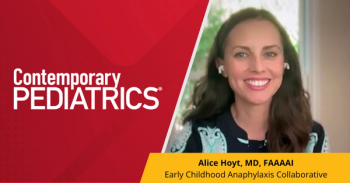
Disturbed sleep, depression may have bidirectional relationship through early years
The cohort study is the first to report developmental cascades between disturbed sleep and depressive symptoms throughout childhood and early adolescence.
A new study found a bidirectional association between
Several studies have looked at bidirectional associations between disturbed sleep and depression in children and adolescents, and fewer have examined 3 or more time points. Furthermore, none of these studies have focused on both developmental stages.
“Understanding the longitudinal, bidirectional associations and possible developmental cascades between disturbed sleep and depression has the potential to inform risk identification and prevention programs,” wrote the present study investigators, led by Cecilia Marino, MD, PhD, Hospital for Sick Children.
To better elucidate these associations, the team looked at the Québec Longitudinal Study of Child Development, a representative birth cohort of infants born between 1997 - 1998 to mothers living in Québec, Canada, and utilized cross-lagged models covering both childhood and adolescence. The data were collected across 8 waves between ages 5 - 17 and analyzed from February to October 2021.
The Study
The team evaluated 1689 children (50.4% female) and 1113 adolescence (53.5% female). For the childhood analyses – defined as ages 5 - 9 years old – data collected at ages 5, 7, and 8 years were considered. For the adolescence analyses – defined as ages 10 - 17 years old – data collected at 10, 12,13, 15 and 17 were evaluated.
Marino and colleagues sought primary outcomes of disturbed sleep depressive symptoms, which were parent-reported. The team also noted sleep duration, time awake in bed, daytime sleepiness, sleep talking, sleepwalking, night terrors, and nightmares.
In the childhood cohort, parents reported depressive symptoms using the Child Behavior Checklist and Revised Ontario Child Health Study Scales. Adolescents self-reported using the Mental Health and Social Inadaptation Assessment for Adolescents.
The Results
Significant bidirectional associations between depressive symptoms and disturbed sleep at all time points were found in childhood, thus indicating cascade processes (range β, 0.07; 95% CI, 0.02-012 to β = 0.15; 95% CI, 0.10-0.19).
Among adolescence, the team observed significant bidirectional associations from depressive symptoms to disturbed sleep (β = 0.09; 95% CI, 0.04-0.14) and vice versa (β, 0.10; 95% CI, 0.04-0.16) between 10 and 12 years.
Furthermore, depressive symptoms were modestly associated with disturbed sleep (β, 0.05; 95% CI, 0.001-0.10) in patients 12 and 13 years old. However, the reverse association was not significant.
Marino and team found that cross-lagged estimates were not significant after 13 years of age; further, the associations did not vary by either sex or puberty-by-sex.
“Taken together, our findings suggest that there might be a sensitive window between 5 and 12 years for sleep interventions to mitigate the emergence and/or growth of later depressive symptoms,” they wrote. “Starting prevention efforts in childhood may have a similar, or even greater impact on depression compared with treatment initiated in adolescence,because it would reduce the risk before depression consolidated.”
Nevertheless, the team highlighted the study’s reliance on self-report data as limitation for their study. They urged further need for objective measurements and/or validated questionnaires.
The study, “Pediatrics Testing Bidirectional, Longitudinal Associations Between Disturbed Sleep and Depressive Symptoms in Children and Adolescents Using Cross-Lagged Models,” was published online in JAMA Network Open.
Newsletter
Access practical, evidence-based guidance to support better care for our youngest patients. Join our email list for the latest clinical updates.












